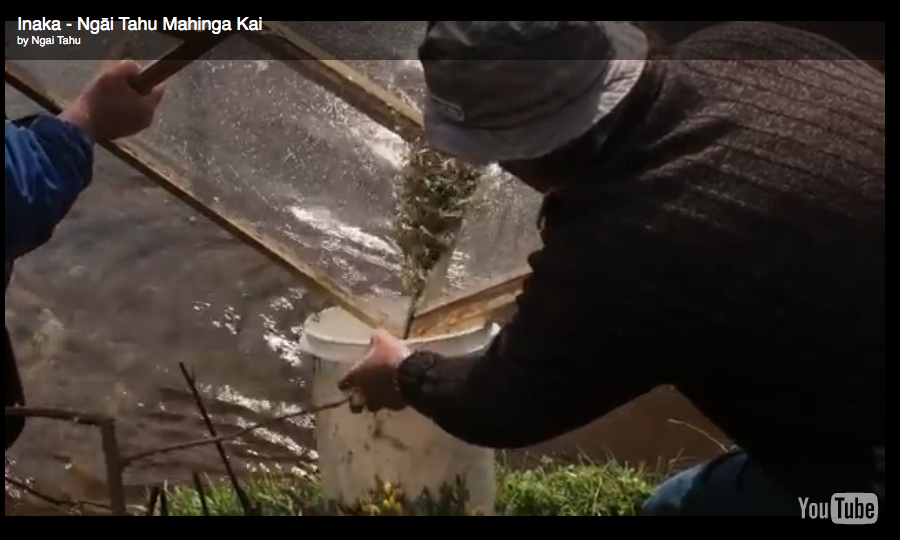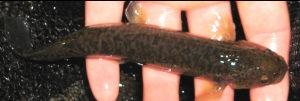Whitebait – Inanga/ (Inaka for Ngāi Tahu)

Juvenile Whitebait being caught. Click to see a video about Whitebait – Inanga or Inaka produced by Ngāi Tahu
Māori tribes vary in what they call Inanga. Some refer the name Inanga to adults of freshwater species. Others more commonly refer to the juvenile fish of different species.
In addition to Inanga (Inaka for Ngāi Tahu), there are various names used by iwi for the juveniles fish including; atuatahi, karohi, karohe, kōrohi, koaeaea, kaeaea or perhaps kae-aeae, mata, tūarenga, uaua, waharoa, mahitahi, maitai and pūkōareare.
In addition to Inanga (Inaka for Ngāi Tahu), there are various names used by iwi for the adult fish including; atutai, hiwi, kāraha, kāraharaha, karahi, kōkopu, kōaro,marearea, matuawi, ngaruru and pahore,
It is commonly accepted that there are 5 species in the modern whitebait fisheries.
Inanga (Galaxius maculatus)

Adult Whitebait – Inanga
Banded Kōkopu (Galaxius faciatus)

Adult Whitebait – Banded Kōkopu
Giant Kōkopu (Galaxius argenteus)

Adult Whitebait – Giant Kōkopu
Shortjaw Kōkopu (Galaxius postvectis)

Adult Whitebait – Short Jaw Kōkopu
Kōaro (Galaxius brevipinnis)

Adult Whitebait – Kōaro
All of these species except the Banded Kōkopu are threatened in the wild. Various species of smelt are often confused as whitebait.
Information sources:
Ikawai – Freshwater fishes in Māori culture and economy – Mc Dowell, R.M. Canterbury University Press 2011
Niwa Fresh Water Fish Database – https://www.niwa.co.nz/our-services/online-services/freshwater-fish-database
Video – Ngāi Tahu Mahinga Kai
Images – Courtesy of Stella McQueen and Mike Dickison.
Whitebaiting Season Information – http://www.doc.govt.nz/whitebaiting
